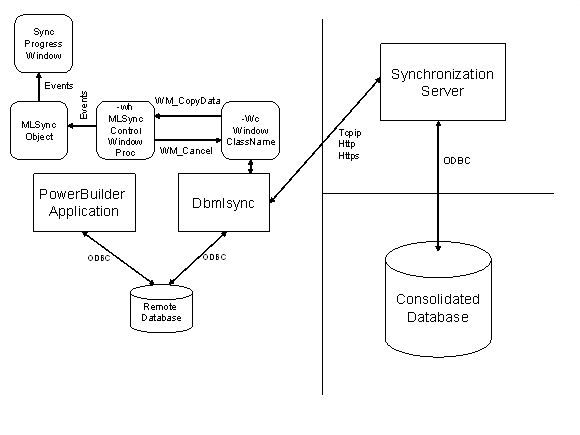How MLSync events are implemented
The MLSync object in a PowerBuilder application and the dbmlsync process communicate with each other by sending messages between two windows, as shown in the following figure. The window that the MLSync object creates uses an internal function, MlSyncControlWindowProc, to process these messages.
The Synchronize function adds a "-wh window_handle" argument to the end of the command line string that launches dbmlsync. This lets dbmlsync send WM_COPYDATA messages to this window handle. MlSyncControlWindowProc then triggers the appropriate event in the MLSync object.
Figure: How the synchronization process works

How progress window events are triggered
The MobiLink Synchronization Wizard generates an instance of an MLSync object that contains PowerScript code in each of its events. When appropriate, this code triggers an event of the same name in the progress window that is either generated by the wizard or customized for your applications.
How the CancelSync function is implemented
On the dbmlsync command string, there is a "-wc window_class" argument that specifies the class name of a communications window that dbmlsync registers and creates. If the PowerBuilder application needs to cancel the synchronization process during any of its event processing logic, it calls CancelSync. This function finds the window handle associated with the -wc window class and sends a WM_CLOSE message.


